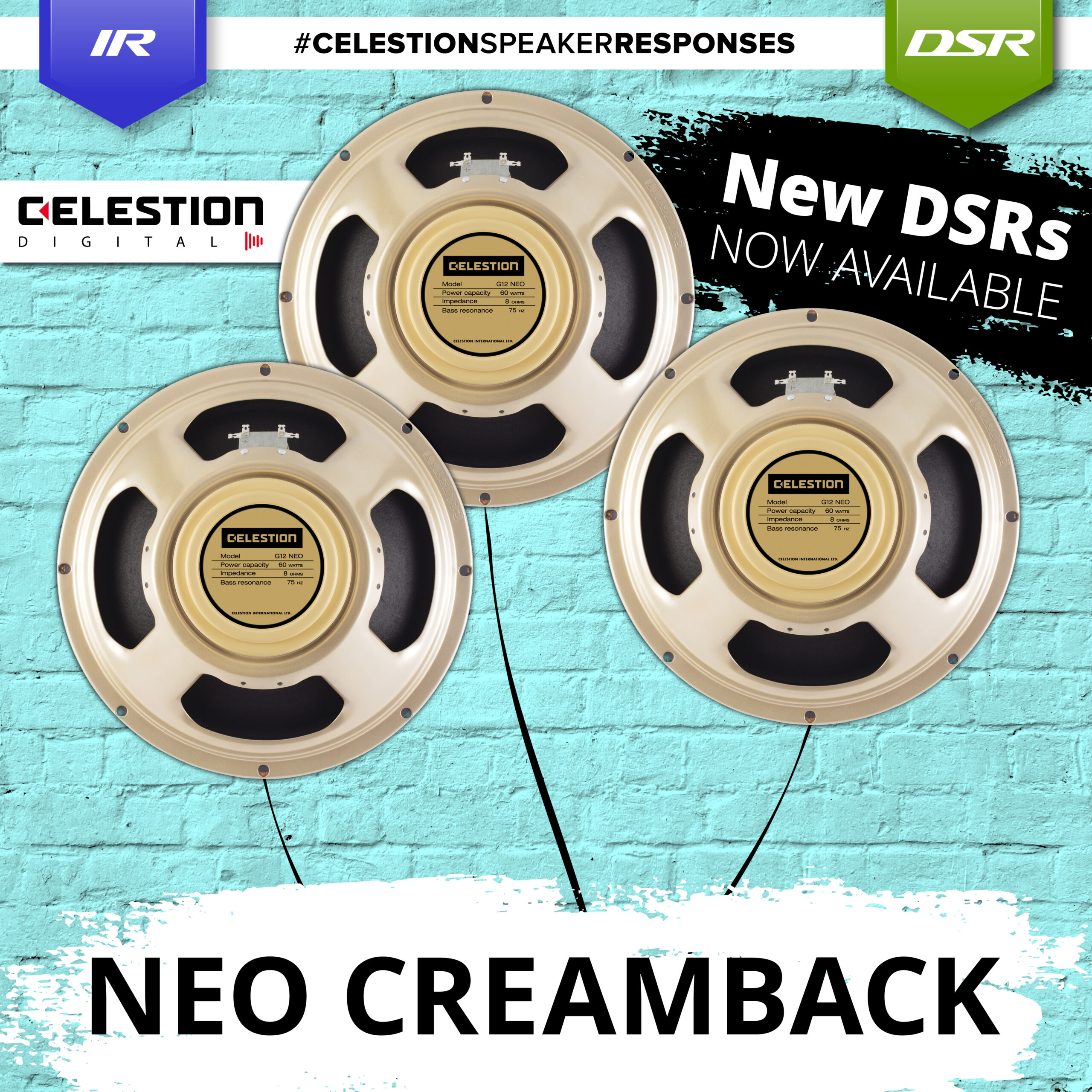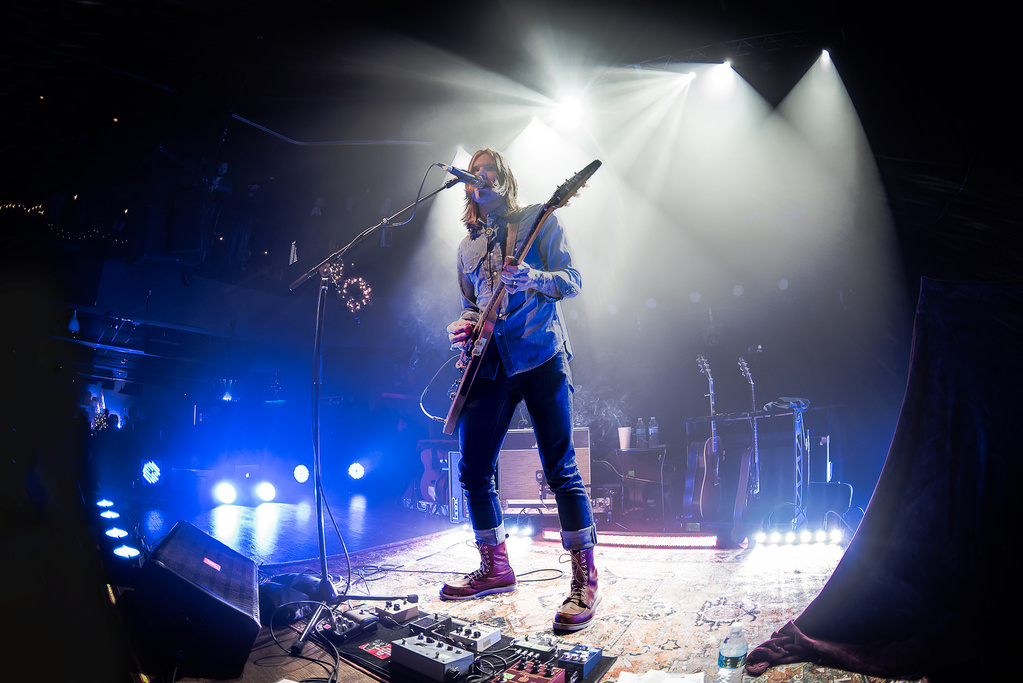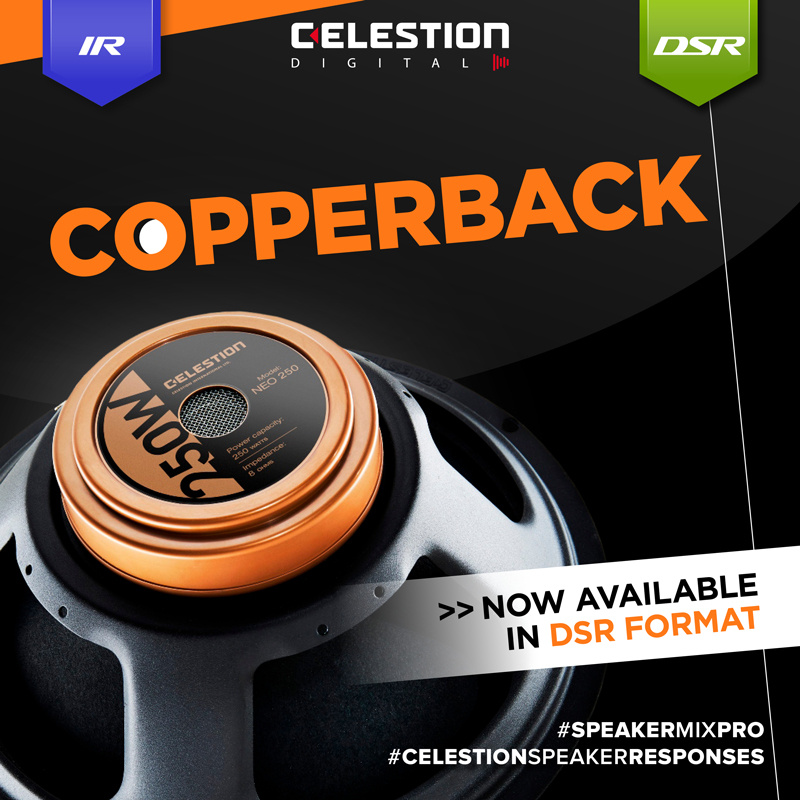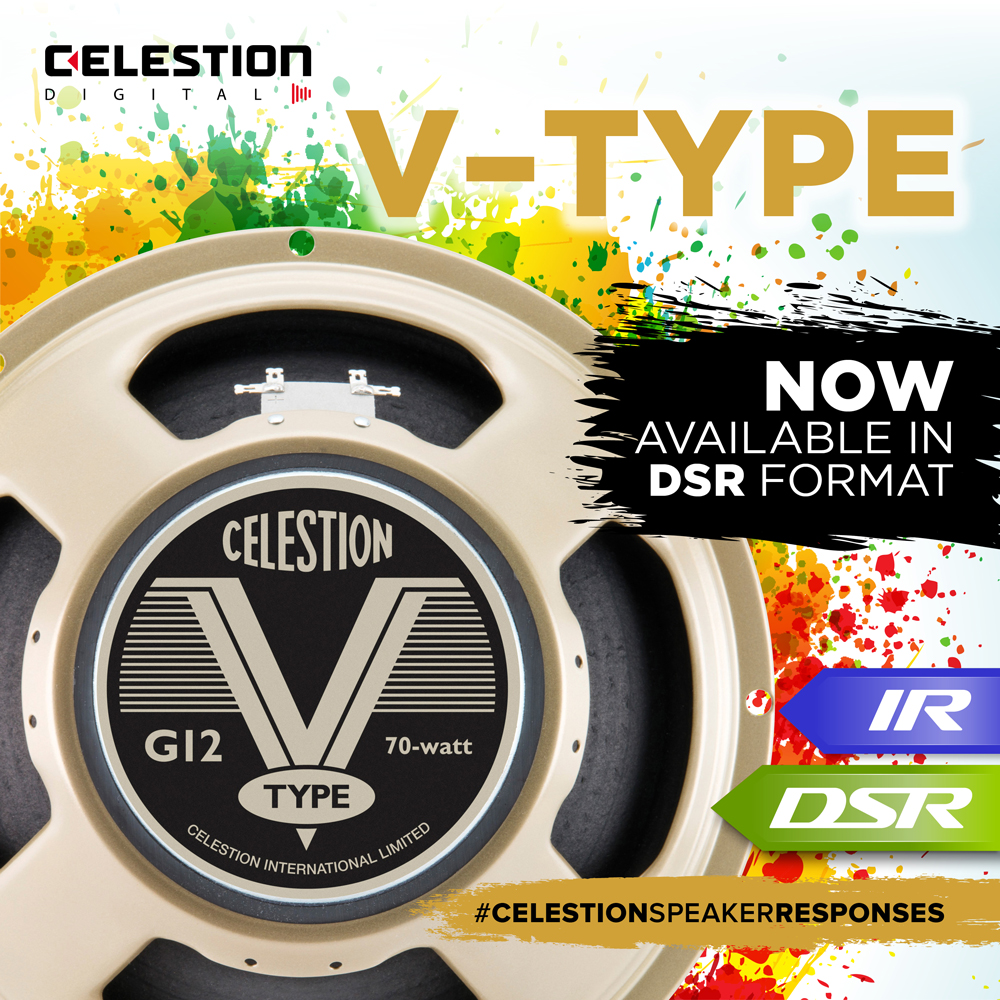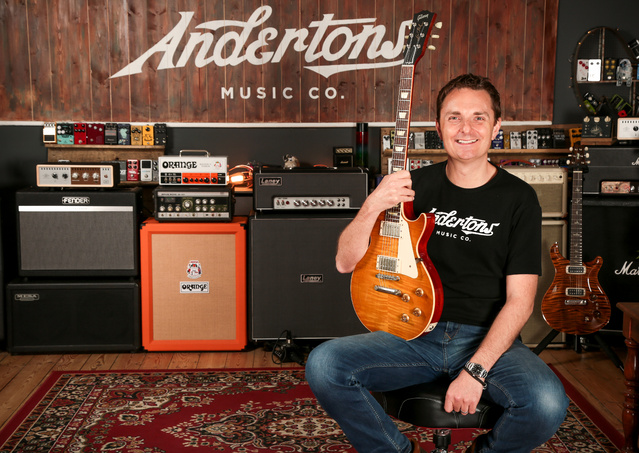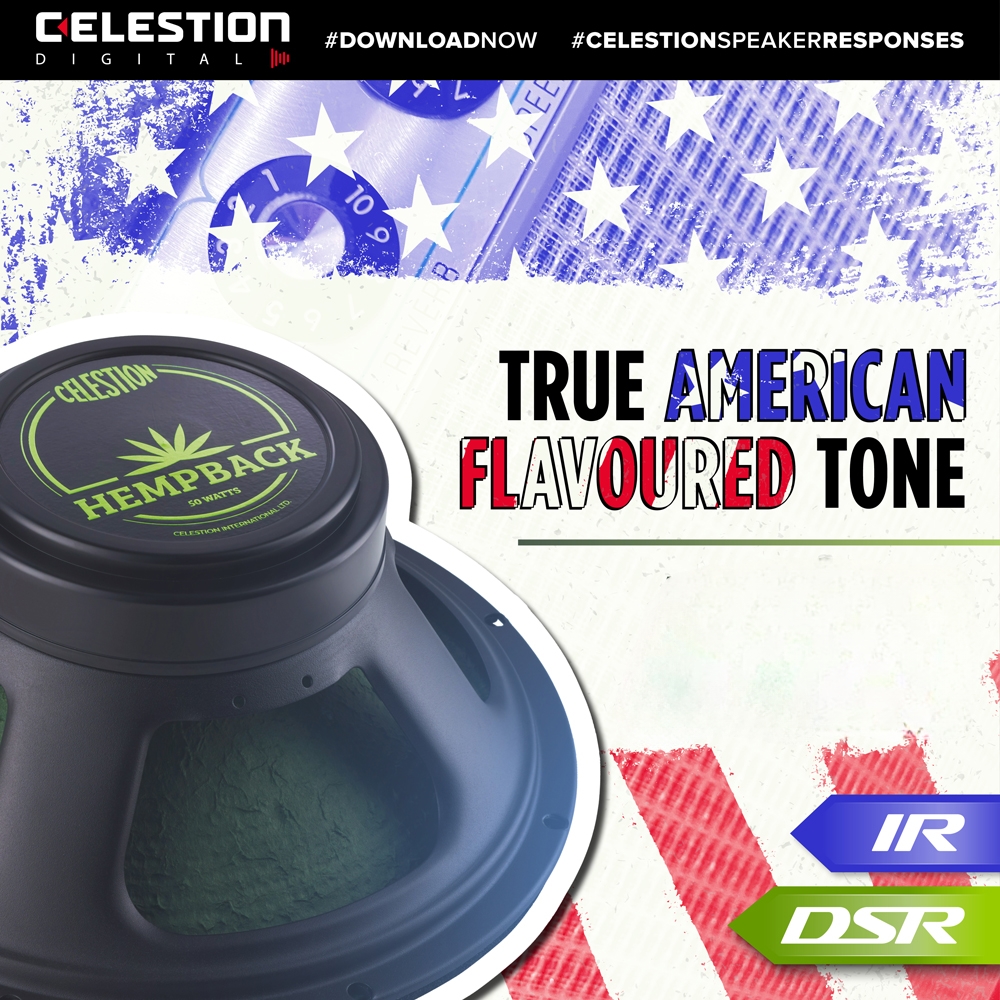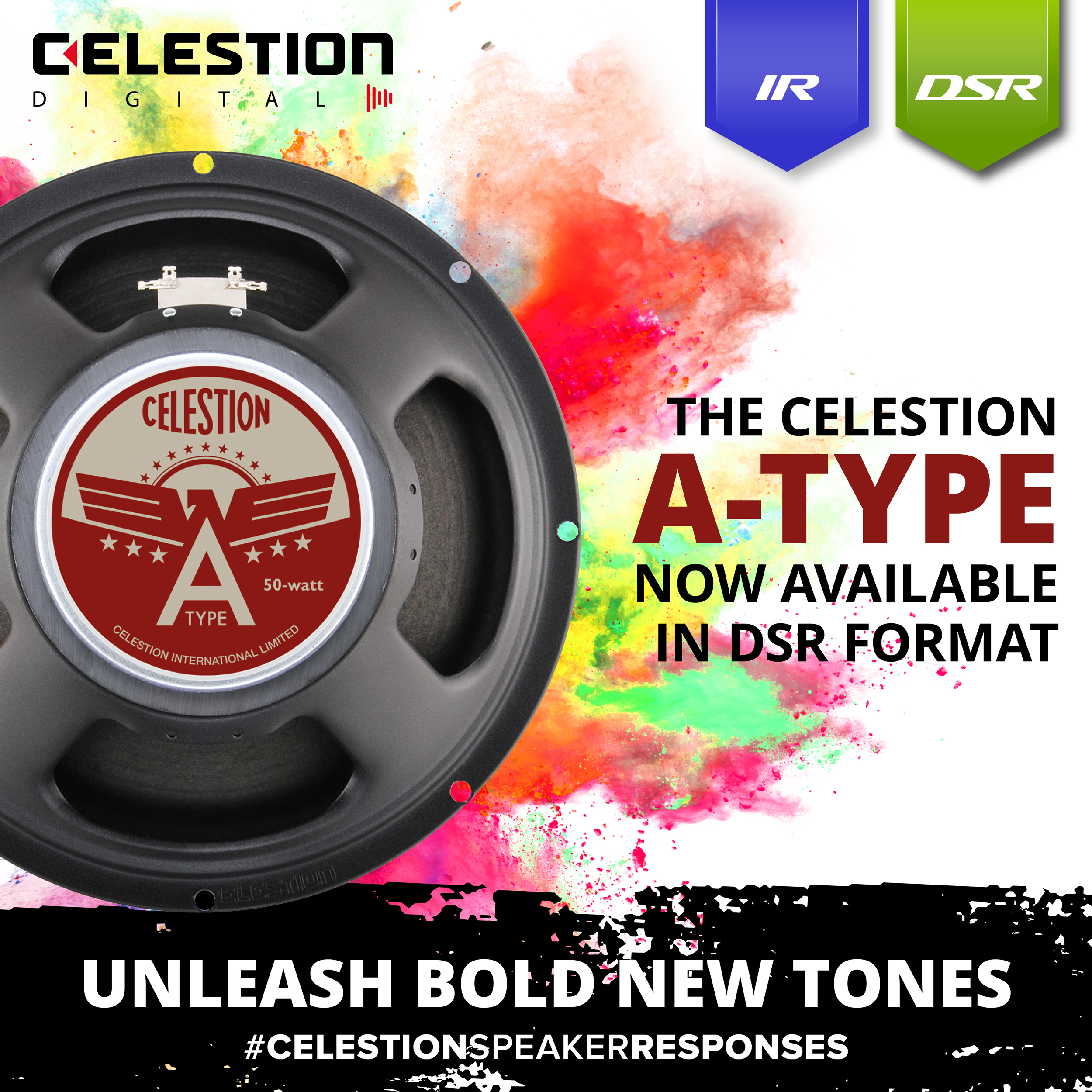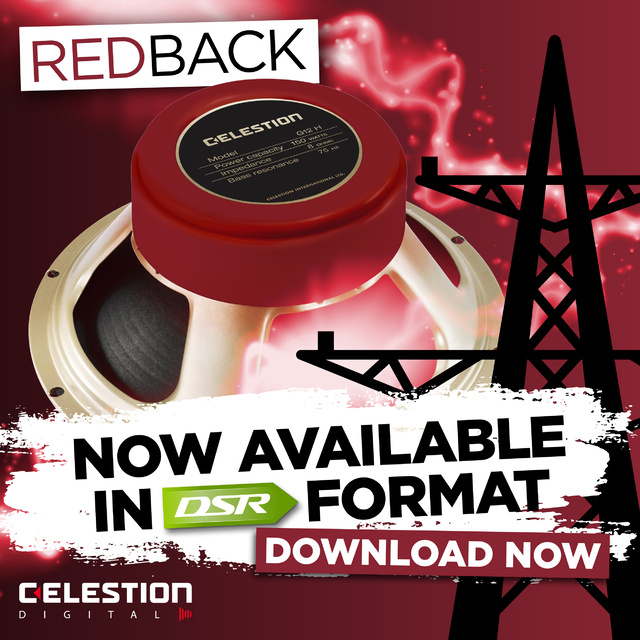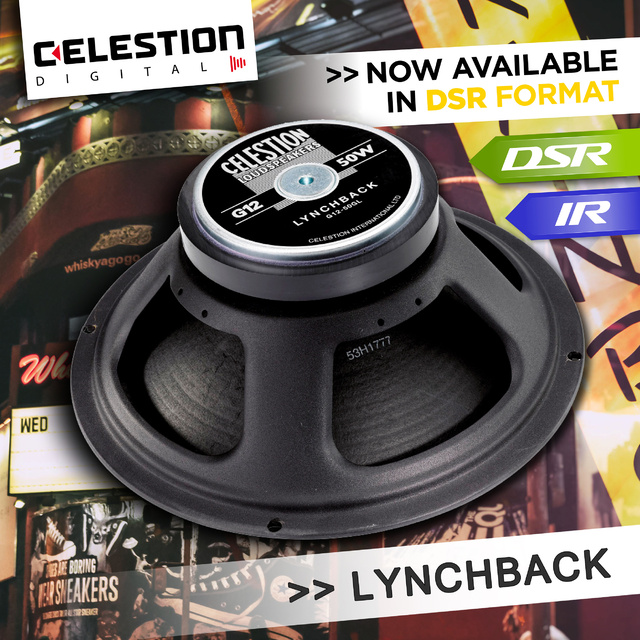
Ipswich, UK (June 06, 2023) —Celestion, the celebrated manufacturer of guitar and bass loudspeakers and professional audio drivers for sound reinforcement applications, is proud to announce the addition of the G12-50GL Lynchback collection to its offerings of Dynamic Speaker Response (DSRs,) the next-generation digital speaker responses that capture the sound and feel of the speaker’s dynamic, non-linear responses to deliver the greatest tonal detail. The new Lynchbacks join the extensive collection of Celestion DSRs designed especially for use with SpeakerMix Pro, the self-contained studio-grade DAW plug-in offering ground-breaking levels of detail and stunning guitar and bass speaker tones. The complete Celestion digital collections of IRs and DSRs, as well as the SpeakerMix Pro plug-in, are available for download at CelestionPlus.com.
Created to meet the exacting standards of iconic metal guitarist George Lynch, the G12-50GL Lynchback speaker delivers the legendary and much-celebrated vintage tone of a G12M Greenback with the additional capability of producing a harder, more aggressive sound on demand. Not just for high-octane shred-metal, the Celestion Lynchback delivers responsiveness, clarity, and superb dynamics.
The new Celestion Lynchback Dynamic Speaker Response collection, available exclusively for use with the company’s ground-breaking SpeakerMix Pro plugin, enables users to achieve stunningly realistic guitar tones in their DAWs with ease. Dynamic Speaker Responses (DSRs) running in SpeakerMix Pro react to the dynamics of the signal hitting the speaker to create the most authentic micro-dynamic sound of the real speakers for the next generation in digital tone, with all the life and three-dimensional feel of the real thing.
The Lynchback DSRs have been recorded by the company’s expert sound engineers using the same meticulous techniques as all of Celestion’s best-selling IRs & DSRs. Captured with three pro-quality studio microphones – the classic Shure SM57, a Royer R-121 ribbon mic and a Sennheiser MD421. Each of these mics were recorded in six different positions – named within the speaker response files as Balanced, Bright, fat, Thin, Dark and Dark 2 – as well as a rear mic position for the open back cabs. The addition of a Neumann TLM107 room mic provides the user with a huge number of different mic mixes and a range of unique tonal options.
The files for the Celestion Lynchback DSRs series are available individually or as a complete set. Explore the full range of sounds for this classic speaker, at a considerable saving over buying the individual files. The Lynchback DSR set includes five cabinet configurations: 1×12 (both open and closed back), 2×12 (both open and closed back) and 4×12 (closed back).
As a host program for the new Lynchback and the entire line of Celestion DSRs, SpeakerMix Pro presents the genuine next-generation virtual speaker solution. More than just a top-level IR loader and convolution engine for hosting impulse responses– it offers pristine sound, mixes up to six channels of different responses into a stereo or mono track and even fixes IR sample rate/project mismatches.
With SpeakerMix Pro, users can:
- Discover Celestion’s proprietary Dynamic Speaker Responses (DSRs), the next generation in Impulse Response technology that captures the sound and feel of the speaker’s dynamic, non-linear response for even more detail and realism.
- Integrate their personal library of Celestion and third-party Impulse Responses to make the most of the tones they already own. SpeakerMix Pro uses its unique DSR algorithm to make existing IRs more dynamic sounding, enhancing their tone with even greater feel.
- Incorporate Celestion’s superb room responses (or add your own) into your mix for an authentic ‘live’ sound. Add room delay for further ‘depth’ and ‘size.’
- Deploy the unique Z-curve function to closely model the dynamic electrical coupling between amp and speaker.
- Fine-tune the mic position, enabling the user to adjust the position of the microphone across the speaker until they’ve found the tone that’s just-right (DSR-specific functionality).
The free 14-day demo of the SpeakerMix Pro plugin is available for download and automatically installs with 10 free DSR speaker cabinets curated to give users a broad tone experience across the Celestion range of guitar and bass speakers. Users can upgrade to the full version of SpeakerMix Pro at any time during or after the trial period. Simply purchase the full version of SpeakerMix Pro and select 10 free DSR cabs (choose the preferred DSRs from the available range on Celestionplus.com during upgrade).
About Celestion Digital
The introduction of authentic Celestion Impulse Responses represented the company’s forward step in making their celebrated speaker tones available as digital downloads. Celestion IRs capture the essential behavior of a speaker in a particular cabinet in the specific space in which it was recorded, including the frequency and phase response of single drivers as well as the interaction of multiple speakers. They offer significant benefits in both recording and live production, enabling the desired tone to be precisely and consistently reproduced regardless of the recording or live sound environment. Explore, audition, and download the extensive collection of Celestion guitar and bass Impulse Responses at celestionplus.com. The introduction of Celestion SpeakerMix Pro sees the company delivering a truly forward-thinking studio software solution that enables users to get every ounce of tone from Impulse Response technology. The companion Dynamic Speaker Responses launched alongside the plug-in exemplify the next generation in speaker response emulation, representing a true advancement in the technology of digital speaker tone.
Celestion Plus.
About Celestion and Celestion Guitar Speakers
An important element to essential British guitar tone since the birth of Rock & Roll, Celestion Guitar Speakers are famous for their lively and vocal midrange character with plenty of sparkle and chime. With worldwide headquarters in Ipswich, England, Celestion design, develop and manufacture premium guitar and bass loudspeakers, and high-quality professional audio drivers for sound reinforcement. These world-renowned speakers are used onstage and in clubs, theatres, and other venues the world over. Contact Celestion at: info@celestion.com and visit us on Facebook at www.facebook.com/celestion.
www.celestion.com

